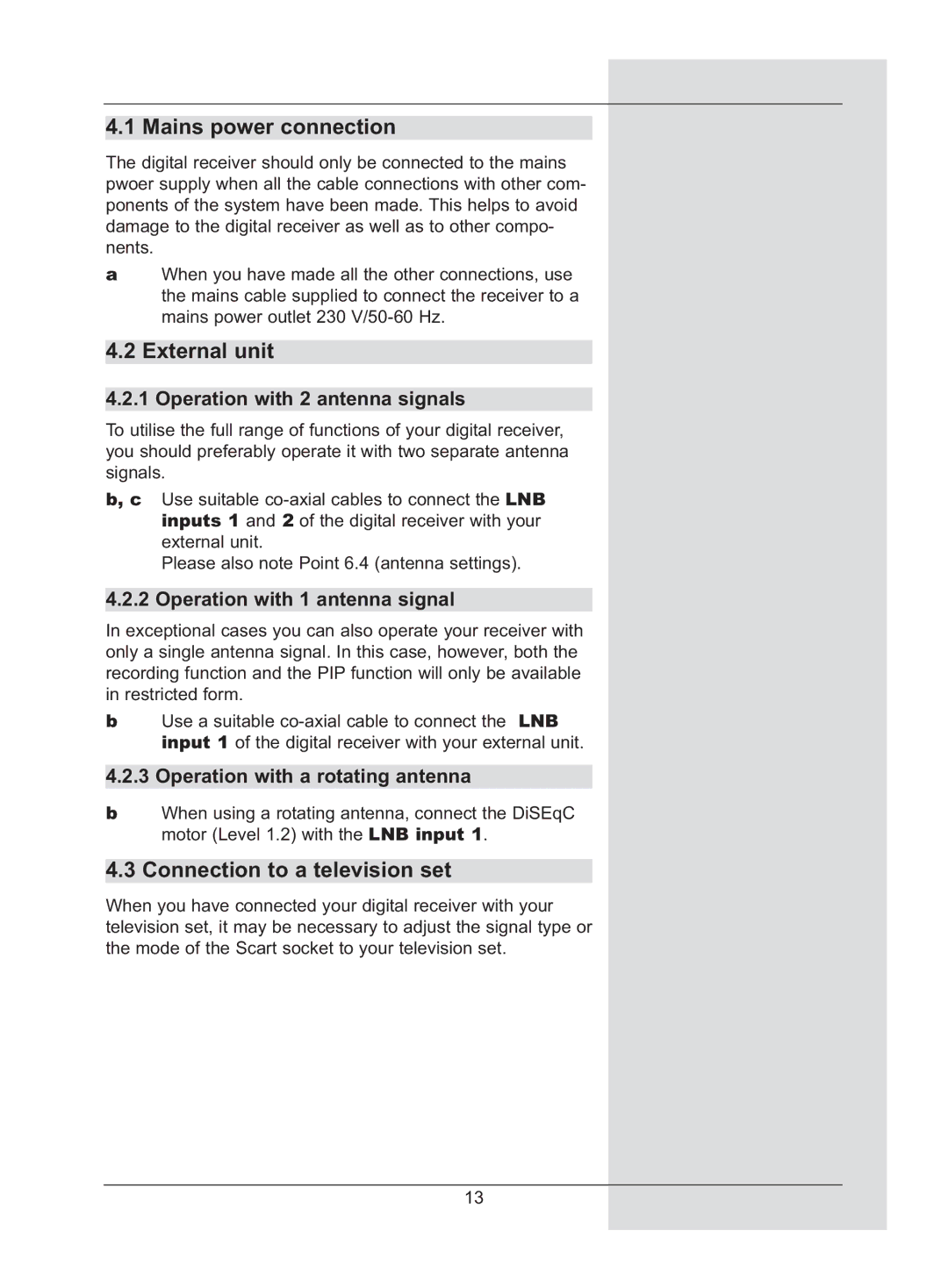
4.1 Mains power connection
The digital receiver should only be connected to the mains pwoer supply when all the cable connections with other com- ponents of the system have been made. This helps to avoid damage to the digital receiver as well as to other compo- nents.
aWhen you have made all the other connections, use the mains cable supplied to connect the receiver to a mains power outlet 230
4.2 External unit
4.2.1 Operation with 2 antenna signals
To utilise the full range of functions of your digital receiver, you should preferably operate it with two separate antenna signals.
b, c Use suitable
Please also note Point 6.4 (antenna settings).
4.2.2 Operation with 1 antenna signal
In exceptional cases you can also operate your receiver with only a single antenna signal. In this case, however, both the recording function and the PIP function will only be available in restricted form.
bUse a suitable
4.2.3 Operation with a rotating antenna
bWhen using a rotating antenna, connect the DiSEqC motor (Level 1.2) with the LNB input 1.
4.3 Connection to a television set
When you have connected your digital receiver with your television set, it may be necessary to adjust the signal type or the mode of the Scart socket to your television set.
13
